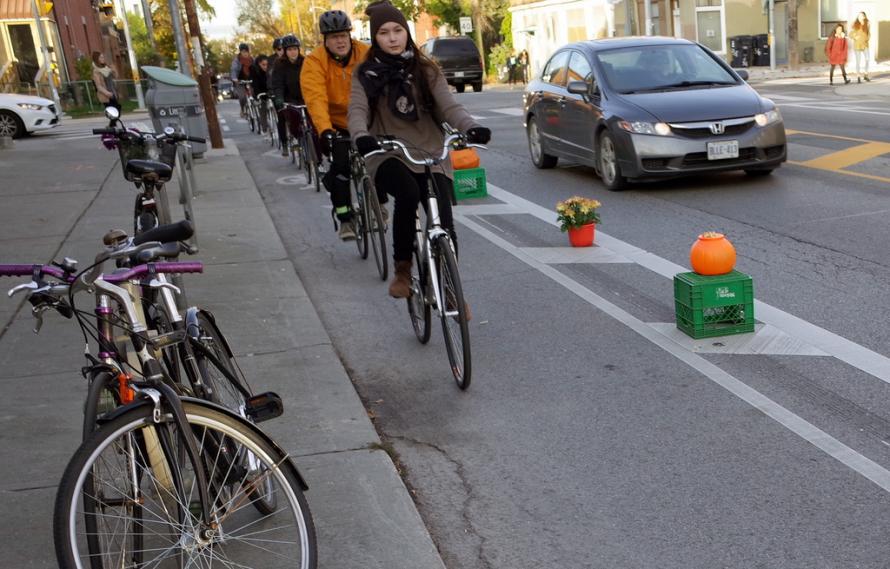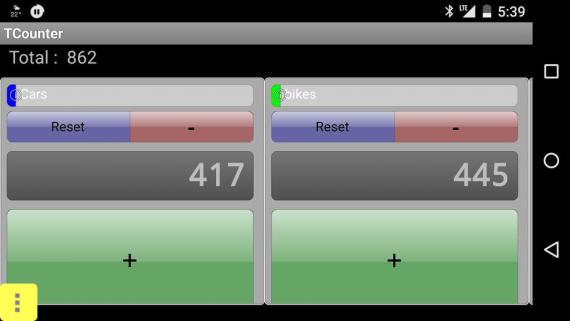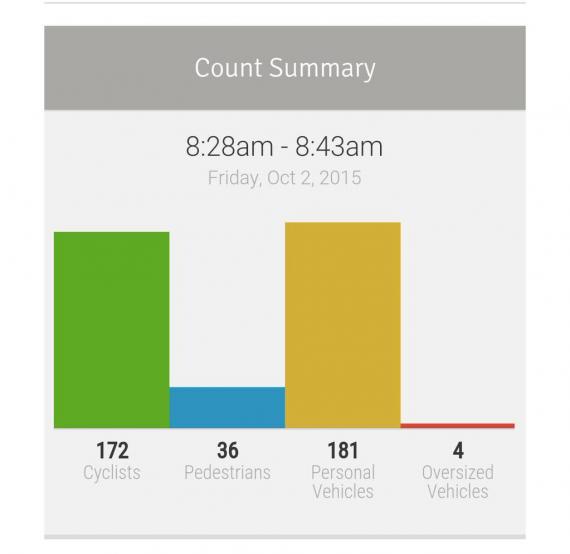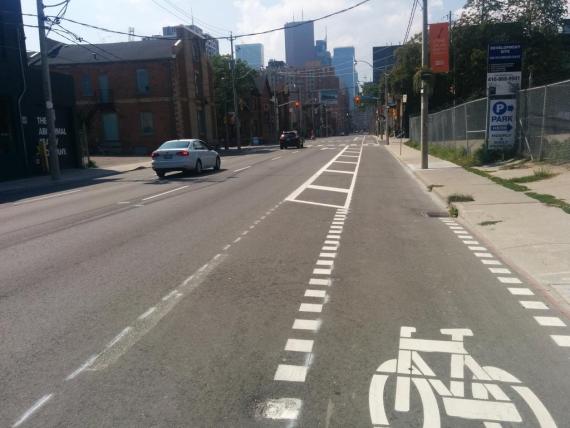The Urban Repair Squad has improved the buffered bike lane on Harbord with a row of jack-o-lanterns. (Photo: Tino) I'm a bit late to this story but I wanted to highlight how cyclists are asking for so little yet how hard it can be get that even on streets with large numbers.
In the City's original plan for improving the safety of Harbord for cyclists, there was going to be a physical barrier between cyclists and car traffic. It was going to be a bidirectional bike lane on one side of the street. Transportation planners reneged on that plan for various reasons (none of which were that compelling to me) and instead put in a wider painted buffer and only physically separated a handful of blocks on Hoskin which got separation with flexiposts and parked cars.
With some imagination (and willingness to annoy the car lobby), I believe the transportation planners could have come up with protected bike lanes that worked for Harbord. For instance, by adopting the Dutch innovation of protected intersections (like Salt Lake City has of all places) they might have been able to make the bidirectional bike path work. Their study, however, only looked at old-school options like timing the lights. And in the end they decided that the delay was not worth the extra protection.
The pumpkins only work on the side where the bike lane is adjacent to the sidewalk. The other side has cars parked between them, which means the cars have to cross the bike lane. That's rather unfortunate but even here it might have been possible to switch the two, but the TTC was opposed to the idea because they want to be able to speed along with their buses without having to worry about drivers getting out of their parked cars.
I'm no transportation planner, but it seems to me that cycling safety has always been given a lower priority to issues that don't actually involve life and death decisions. Sure, the concerns of drivers parking and TTC bus drivers need to be dealt with but do they trump the safety of someone else? No.
Anyway. Happy Halloween! If we all put out our pumpkins as barriers maybe we'll start a trend.




